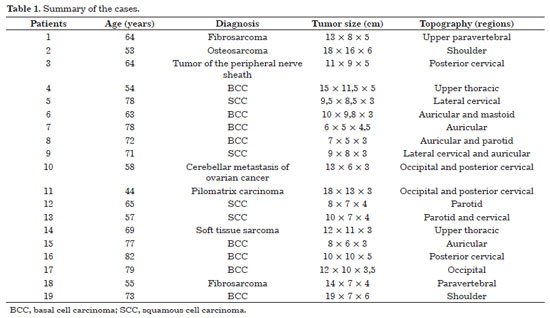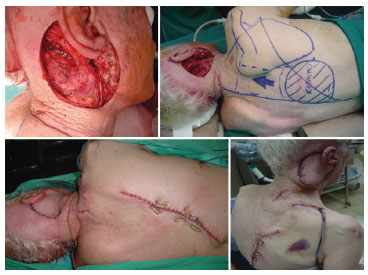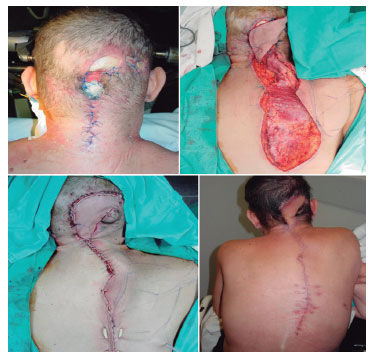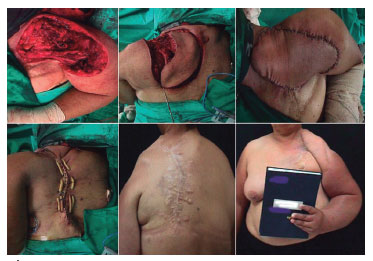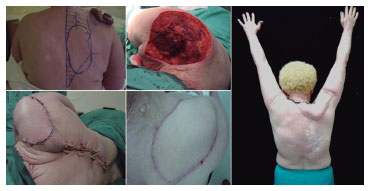ABSTRACT
INTRODUCTION: In this article, we present a literature review on the lower myocutaneous trapezius flap, and report its advantages, surgical technique, and complications.
METHODS: We studied 19 patients treated at INCA with a specific technique, and compared the outcomes with those reported in the international literature.
RESULTS: All reconstructions achieved the procedural objectives, and the defects of soft tissues and skin were repaired. The aesthetic outcome was considered satisfactory by the patients and medical staff. The rate of complications was 21%. No necrosis or signs of infection were detected in the flaps. Concerning the functions, 89.5% of patients preserved their motor function, whereas reduced functional movements were observed in 10.5% of the patients due to tumor invasion to the accessory nerve.
CONCLUSIONS: Despite the continuous advancements in microsurgical techniques, pedicle myocutaneous flaps are still indicated for reconstruction procedures after extended cancer resections. The use of the lower trapezius myocutaneous flap is safe and represents a suitable option for the reconstruction of soft tissues of the lateral and posterior cervical regions, side of the head, shoulder, and upper paravertebral and parascapular regions.
Keywords: Lower trapezius flap; myocutaneous flap; head and neck reconstruction; chest reconstruction.


